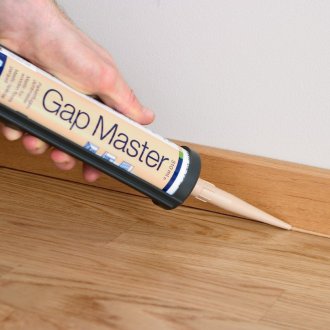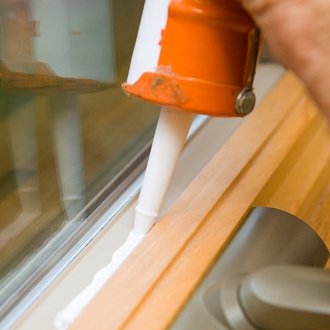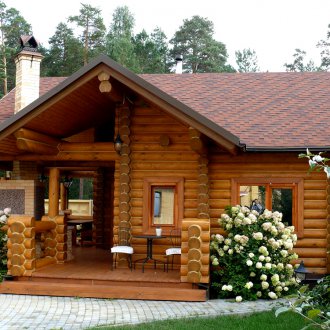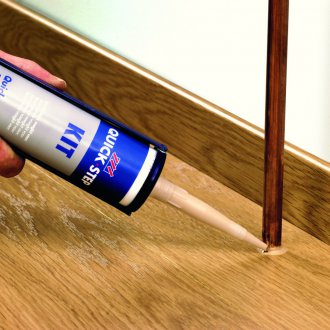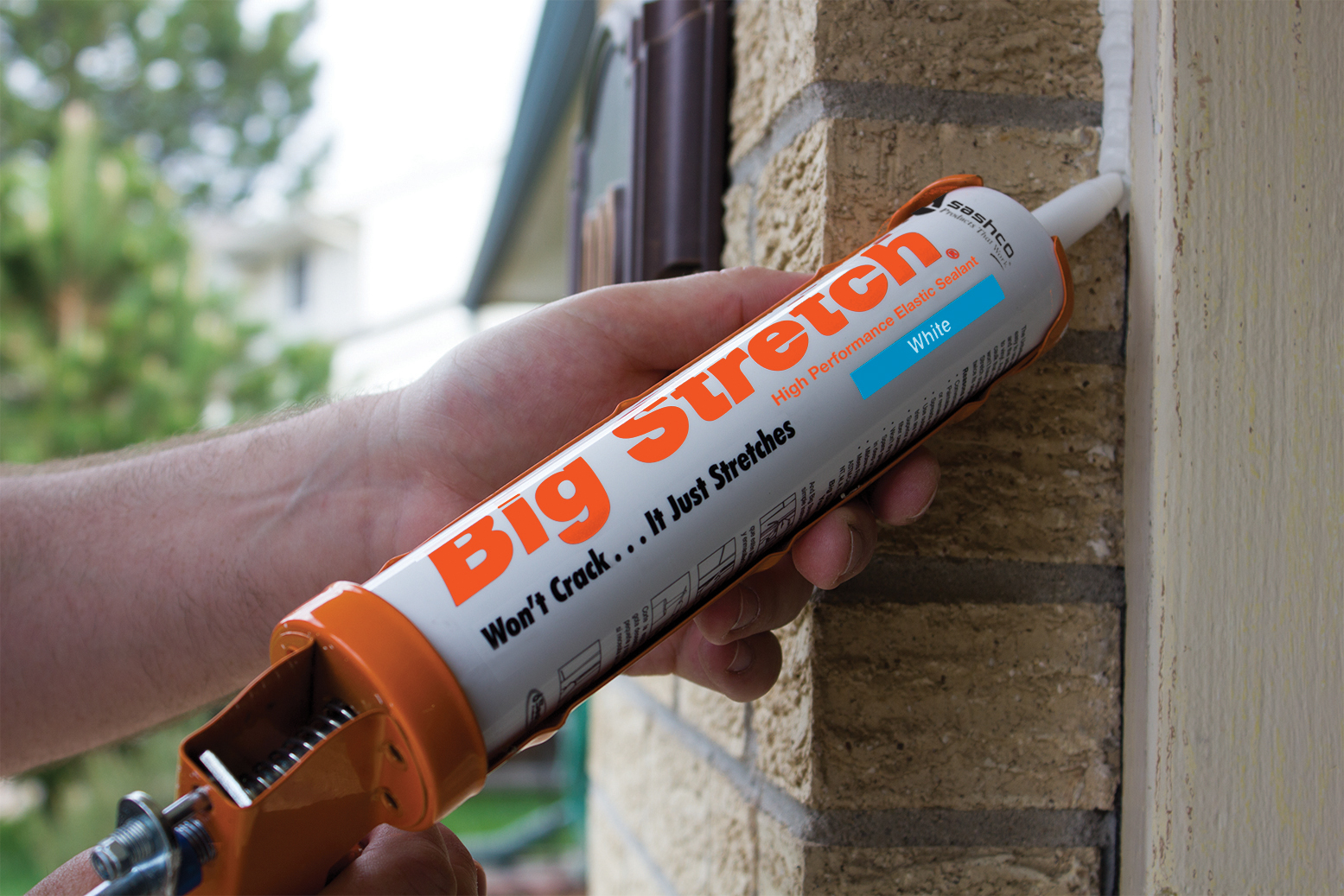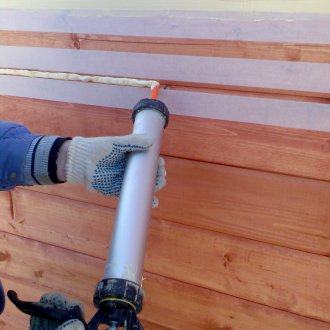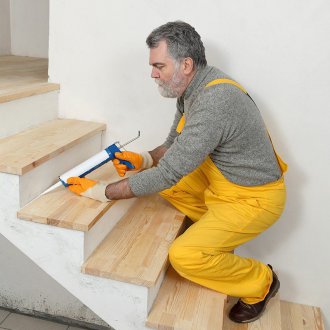Sealant for wood - a reliable solution to the problems of cracks and crevices
Content
Sealants are a necessary and indispensable material when repairing any structures, including wooden ones. Moreover, compositions are used at different stages of work.
A sealant is a pasty or viscous mass made on the basis of polymers. The sealing effect appears after hardening of the composition or evaporation of the solvent.
Sealants for wood can be divided into two types:
- used for work with small deformation or its absence. For example, for fixing sedentary decorative details from wood, at the final stages of laying parquet, wooden skirting boards;
- joint sealant for wood is intended for joints and cracks in conditions of high deformation. It is mainly used for sealing interventional seams, cracks between logs in wooden houses.
The following requirements are imposed on compositions for woodwork:
- reliable protection against winds / drafts, lower heat losses;
- high-quality elimination of cracks in logs and cracks between them;
- long service life (at least 20 years);
- excellent adhesion to wooden surfaces;
- lack of need for special skills;
- the ability to use indoors and outdoors;
- hygiene and environmental friendliness (should correspond to natural materials from wood). Preservation of the external beauty and aesthetics of buildings;
- maintenance of operational characteristics at seasonal fluctuations of temperatures.
An extensive offer from manufacturers may make it difficult to choose a sealant for wood. To simplify the purchase process, you need to decide in advance on some points:
- place of use of the composition. In the construction markets they offer compositions for external and internal works, for window frames or roofs, universal and various others;
- loads and factors that will affect the treated structure;
- sealant composition.
Types of sealants
The stores offer several types of wood sealants: acrylic, silicone, bitumen, polyurethane.
Acrylic Sealant for Wood
It is used for internal work. Its main difference is the possibility of painting the repaired surface, since the acrylic seam “holds” the paint well.
For finishing, varnishes or acrylics are used. Waterproof and non-waterproof sealants are available.
The high demand for waterproof composition due to several positive qualities:
- resistance to water and temperature;
- perfectly bonds porous surfaces. After applying the composition, one day is enough for it to completely dry;
- the ability to let steam through (thanks to the interseal sealant moisture is not collected);
- affordable price;
- ease of use (no diluents / solvents or heating required), can be used indoors;
- quality and durability (the surface of the composition does not turn yellow with time and does not lose its properties under the influence of ultraviolet radiation);
- environmental friendliness and fire safety are explained by the absence of toxins and solvents in the composition.
The lack of acrylic sealant can be considered low elasticity.
When internal work is also very important to choose the color of the sealant, then the seam will be almost invisible. Although in some cases, a contrasting shade can be a design technique when decorating a room or structure. This option is especially justified if you need to hide planning errors and visually change the geometry of the room.
Shades of decorative materials and floor coverings (laminate, parquet) are very diverse. When choosing a color sealant, it is important to remember that the final shade of the composition appears after it has completely dried.
The color palette of sealants varies from manufacturer to manufacturer. In construction markets, 10 to 15 tones are offered. The most popular are white, shades of "pine", "wenge", "oak". To facilitate the selection, some manufacturers offer a palette of paints or trial samples of products. If you need a colored sealant for a tree of a rare shade, then it is advisable to buy a white compound and a special color scheme. By carefully mixing the two materials, you can get the desired tone.
Sealant for wood is most suitable for eliminating cracks in logs, boards, and it also perfectly closes cracks near window sills, around door and window openings.
Silicone sealant for wood
It has more universal use than acrylic, since it is equally used in works outside or inside the building.
Advantages of the composition:
- long service life - about 40 years;
- resistance to significant temperature changes (from -50 to + 140 ° C, to the prolonged action of moisture and sunlight;
- excellent elasticity.
Silicone sealants are produced in three types.
- Acid - characterized by a strong unpleasant odor (disappears after the composition has completely dried), increased strength.
- Neutral - environmental friendly, but more dependent on the effects of atmospheric phenomena.
- Sanitary contain antibacterial additives that prevent the occurrence and spread of mold, fungi. This compound is ideally suited for interior decoration of rooms with a high level of humidity.
Silicone sealants are available in a wide range of colors. Painting joints from this sealant is impossible and this can be considered a significant minus.
Bitumen sealants
The main components are rubber and bitumen. This is an ideal composition for repairing roofs, drains, because it is absolutely insoluble in water. Positive qualities: excellent resistance to low temperatures, can be used on dry and hard surfaces, affordable cost. The sealant is available only in black, which can be considered its main drawback.
Polyurethane sealant
The composition is characterized by high sealing and adhesive qualities. The advantages of the sealant include: resistance to chemicals (acid, alkali), natural phenomena (rain, temperature changes, ultraviolet), fast hardening. There are two types of sealant:
- waterproofing - ideal for conditions of high humidity, for the treatment of surfaces that constantly and directly interact with water;
- sealing - for work on dry surfaces.
Sealants also differ in hardness. When working with metal structures, PU 50 compositions are used, and for the processing of joints and crevices of wooden surfaces or metal, a hardness level of PU 15 is sufficient.
The presence of caustic components in the composition excludes the possibility of using sealant for internal repairs.
Sealant Recommendations
For high-quality processing of seams, crevices, it is necessary to observe some rules:
- the treated areas should be prepared: cleaned from dust, old paint or dried sealant;
- for outdoor work in the winter, surfaces are cleaned of snow, hoarfrost;
- to increase the adhesion, the edges of cracks or joints are primed;
- if the crack / joint has a considerable depth, a release pad (polyethylene foam) is used, which plays the role of a depth limiter. Thanks to this technique, sealant is significantly saved;
- for economical and high-quality expenditure of sealant, mounting guns or pumps are used. The choice of tool depends on the amount of work. It is better to use a gun to eliminate small flaws;
- external work is not carried out in the rain or if precipitation is expected during the drying of the sealant. Also, no work is carried out at air temperatures below 0 ° C. If there is no time, then it is better to use the services of a professional, because special tools and technologies will be required;
- when processing seams, it is necessary to monitor their quality filling. The sealant should fit snugly against the surface of the wood;
- in cold and humid weather, the process of complete drying may take several days.
Given the long service life of almost all sealants, you should not save on such compositions and purchase the cheapest. Properly performed sealing will allow for a long time to forget about the problems of cracks and crevices in wooden surfaces.
